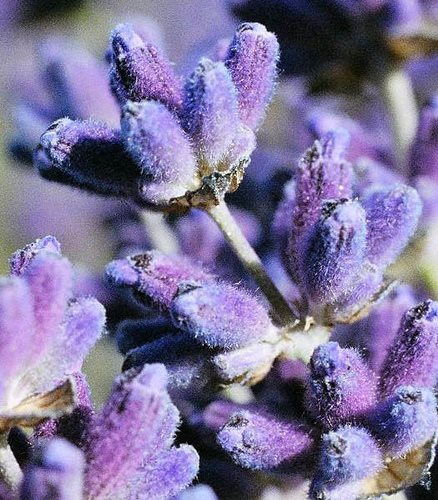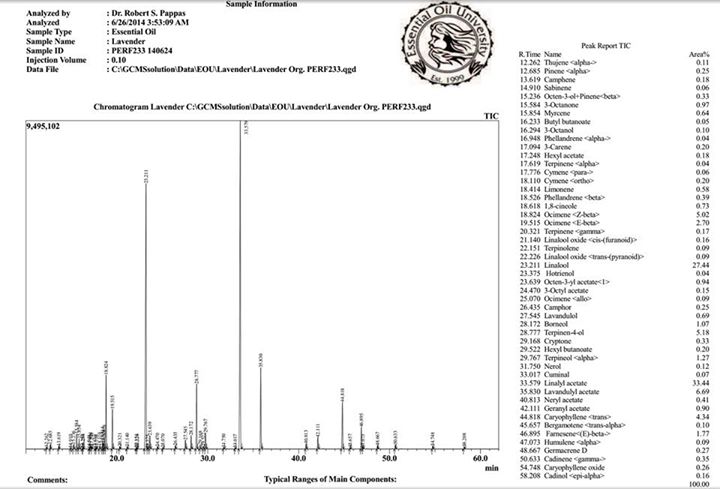Myth #3: True therapeutic lavender (lavandula angustifolia) should have no detectable camphor. Any level of camphor in lavender essential oil would indicate a mix of lavender and lavandin.
The truth is that while indeed the camphor should be low (less than 1%) there is almost always a little bit of camphor in true lavender oil, its basically unavoidable. I have analyzed literally thousands of samples of true lavender oil, including many samples I that have distilled myself and I can tell you, as any other analyst who knows what he is doing will tell you, that if small amounts of camphor are not present then it would be an EXTREMELY unusual exception. Honestly, I cannot even say that I have ever seen a lavender without some small amount of camphor, at least not that I can remember.

Lavender Blooms
If you do your research you will find that the ISO spec for lavender lists the acceptable camphor up to 1.5% , depending on origin, and the British Pharmacopoeia lists camphor at max 1.2%. My standard at EOU is that camphor, 1,8-cineole and borneol should all be about 1% or less in true lavender essential oil. My standard is based on samples taken from all over the world as well as from many distillations that I have personally done on many different varieties of Lavandula.
Just to give anyone interested a typical example analysis, the picture below is of a certified organic lavender that I recently analyzed for a customer. As you can see the peak at 26.435 shows camphor present at 0.25%. Also, if you want peer reviewed literature references showing that camphor should indeed be in lavender, just login to my EO Chemical Reference database and you will see plenty of detailed reports, with journal citations, confirming exactly what I am talking about.

Lavender Analysis (GC)
